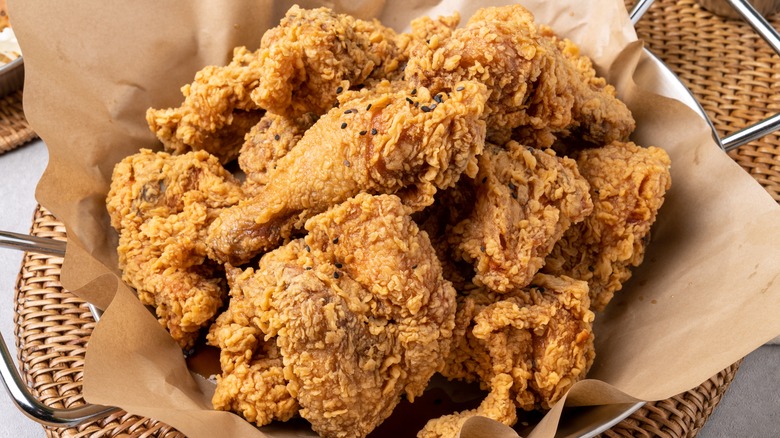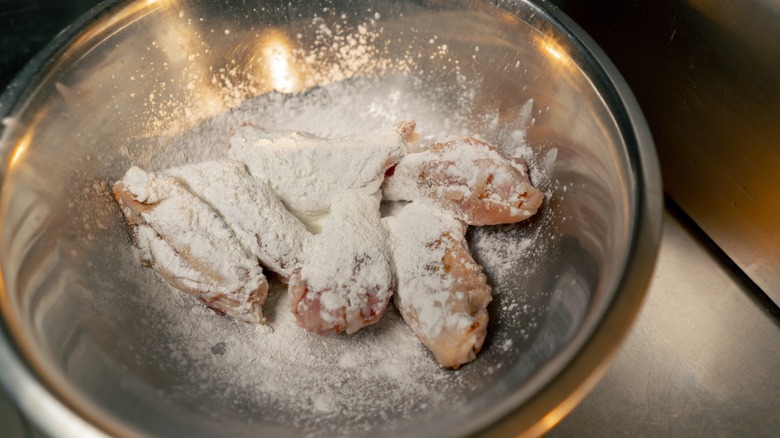The Key To Cooking Up Crispy Fried Chicken Without Flour
One of the beauties of a cooking challenge like making fried chicken without flour is that it opens up a whole world of opportunities. Whether you are trying to cut out gluten, have a wheat allergy, or are just bored of your classic fried chicken recipe, there are numerous alternatives to traditional flour that can produce great fried chicken. In fact you might find that options other than flour produce an outright better fried bird. The allure of juicy, crispy fried chicken is something every corner of the world has succumbed to, and that love has produced endless local variations that differ from your classic Southern-style fried chicken that we know in the U.S. That leaves you with a few simple tasks. Pick out the right flour substitute for you, and learn how to cook it right.
While there are plenty of options for fried chicken, there are a few popular choices that produce superior results: potato starch, rice flour, and cornmeal. Each will provide a different flavor and texture, but all will make crispy, flavorful fried chicken. Potato starch and rice flour, either solo or combined, are a common choice for fried chicken in East Asia, from Japanese ginger karaage to saucy Korean fried chicken. Those mixtures are favored because they not only get ultra-crispy when fried, but stay crispy longer as they cool. While cornstarch is also an option, potato starch is often preferred because its larger granule size leads to a crunchier, more textural result.
Potato starch, rice flour, and cornmeal all make crispy fried chicken without the flour
What makes these flour alternatives so good at getting crispy? Different types of starches like rice flour and potato have a high ability to absorb moisture, which is then easier to drive off in the high heat of a fryer. The starches also burst in the process of absorbing the water and releasing it, creating a brittle structure which gets fused together during cooking. That structure creates the sensation of crunch when you bite into it.
Cornmeal doesn't have that same chemical makeup, but its large granules don't get as soggy, and still add a nice natural crunch to fried chicken. While cornmeal won't give you the even coverage of potato starch or rice flour, it adds a really nice toasted corn taste that's more naturally flavorful than the other two. It's also very easy to coat your fried chicken. Just cover your chicken pieces in a brine or marinade, then coat it with a dusting of cornmeal right before it goes in the fryer.
When it comes to frying these alternatives, a mid range oil temperature is best. Aim for 350 degree Fahrenheit as the time to start dropping your chicken in, and then maintain the fry around 300 to 325 degrees, which should end up perfectly crispy and browned without burning. Try some of these starches on fried chicken, and you may end up thinking of flour as the backup instead.

